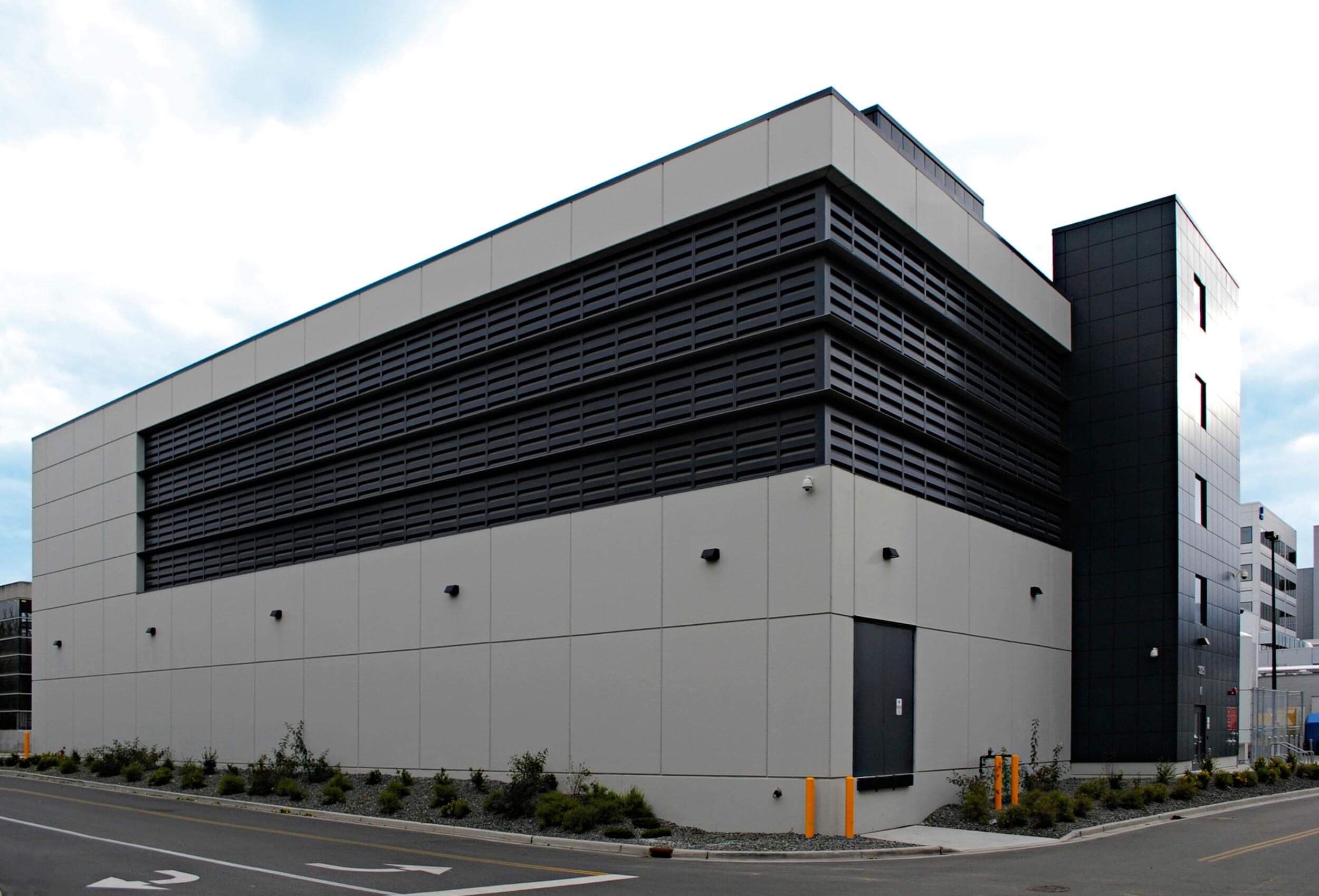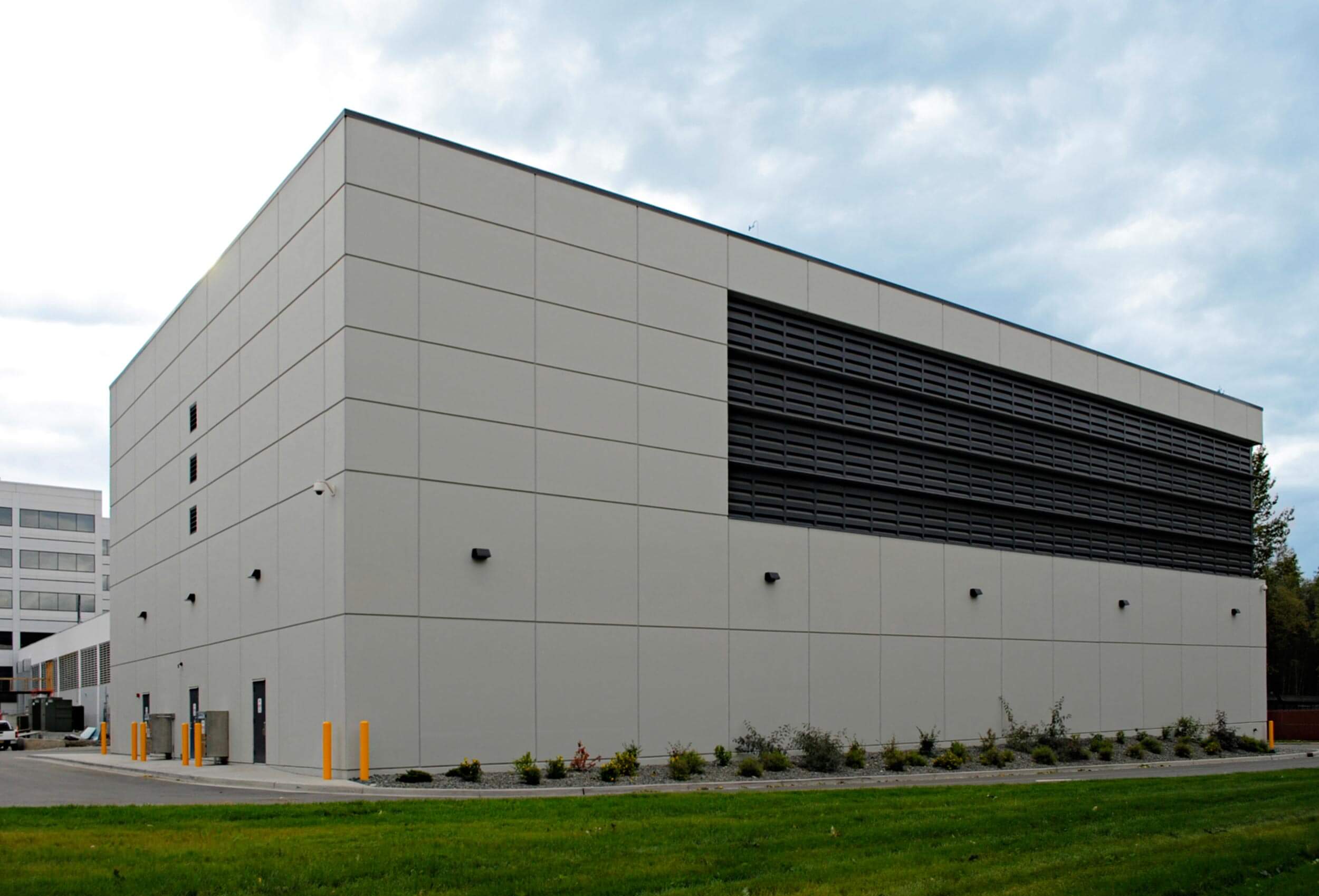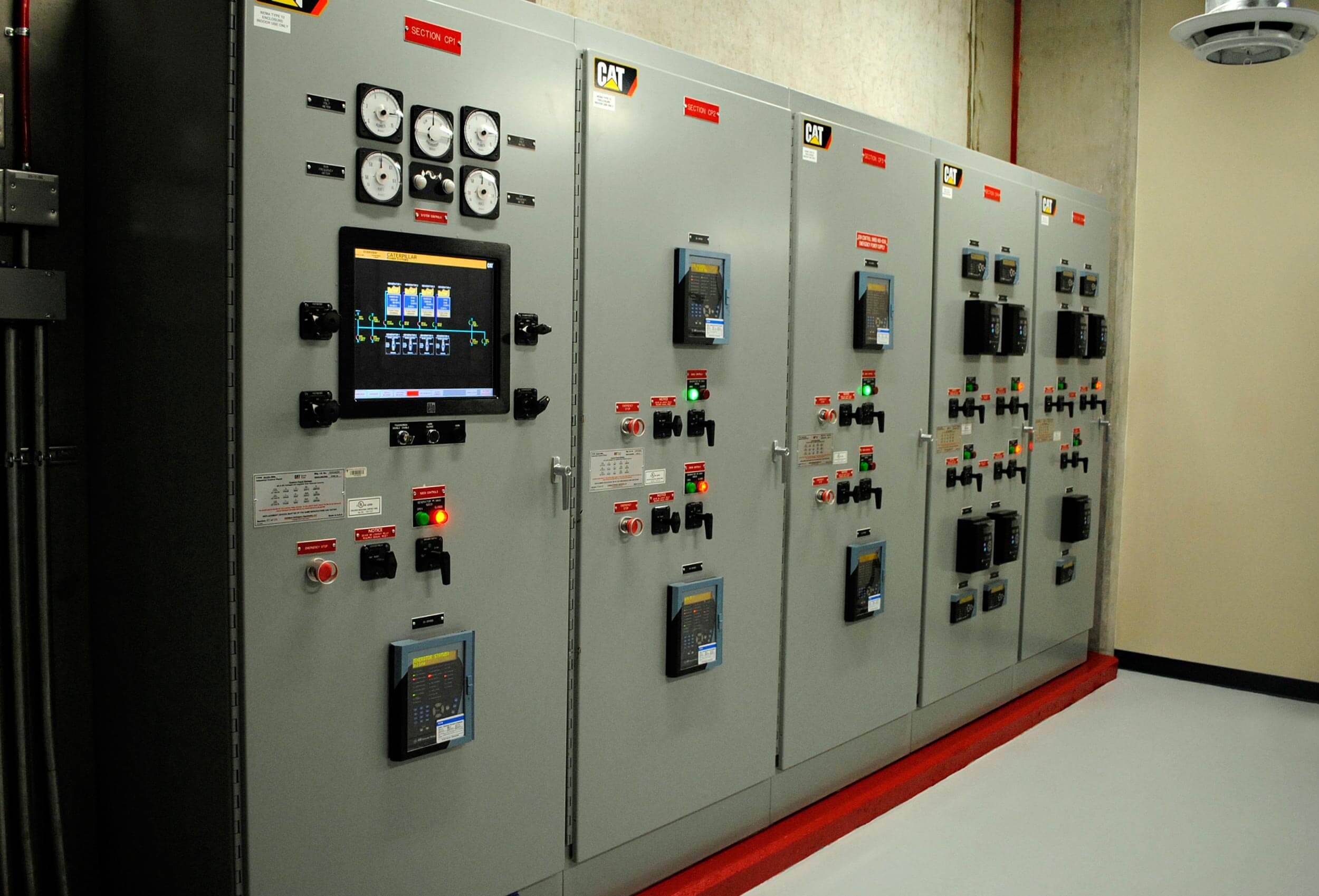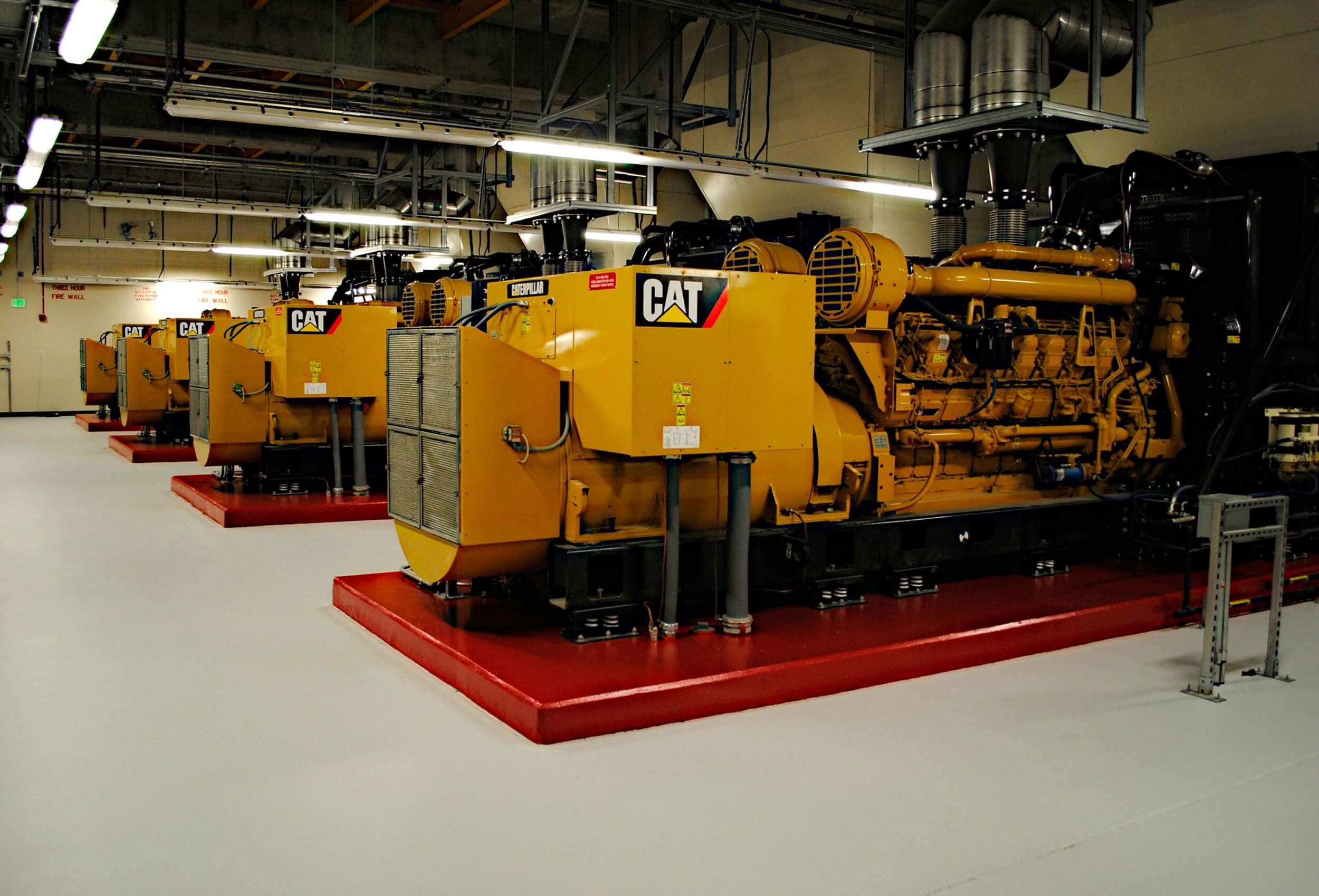In the wake of Hurricane Katrina, the Joint Commission on Accreditation of Healthcare Organizations (JCAHO) issued a Sentinel Event Alert urging healthcare organizations to take steps beyond code minimums to keep patients safe if normal electrical power is unavailable. Hospitals are required by the Joint Commission to develop a disaster response plan for a minimum of four days (96 hours) of limited operation in case of a major disaster or extended utility power outage. This project enables Providence Alaska Medical Center to meet the Joint Commission standard.
The Emergency Power Supply System (EPSS) project for Providence Alaska Medical Center includes a generator power plant, a medium voltage power distribution system, and a fuel oil storage system. The EPSS provides four days of standalone backup electrical power to the main hospital facility. The design for EPSS recognized the need to integrate into the PAMC campus while providing power for uninterrupted hospital operations in a manner that contributes to a positive patient experience.
The generator plant is located just west of the central services building in an area that required significant underground utility relocations and realignment of the Parking Structure PS-1 access road. The building includes 4 new emergency diesel generators, each rated at 2 MW. This combination will carry the essential electrical loads of the existing main hospital and the “Generations” mother-baby tower addition, with N+1 redundancy. Space is provided for one future generator that will be needed to support a future chiller water plant and to maintain the N+1 redundancy well into the future as PAMC continues to grow.
The EPSS facility also encloses a pair of above-ground fuel oil storage tanks bringing usable fuel storage up to 90,000 gallons enabling PAMC to operate the power plant and hospital boilers for 96 hours under maximum wintertime design conditions.





